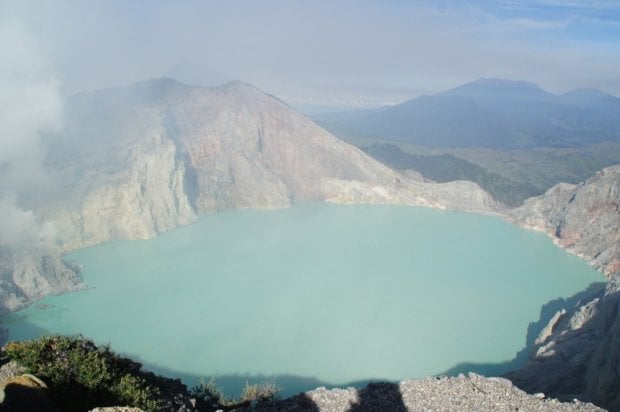
This is one of those trips that we simply had to do while we were young. The local government recently issued an official scare that the Ijen crater is strictly out of bounds to tourists due to the toxic fumes billowing out from the crater pits and the imminent dangers of slipping and falling while trekking on the treacherous rocks in the caldera.
However, as with all things in most parts of South East Asia, where rules are as flexible as a rubber band, official warnings are just really just a verbose way of saying “Don’t say I didn’t warn you!” from the authorities.
Life still goes on for the sulfur miners, who continue to brave perpetual walls of darkness to trek down the same difficult paths with an enormous load of sulfur deposits (usually 1.5 times their weight). We reckoned that there was no reason we couldn’t do the same, given that we were only loaded with delicious ‘干粮‘(I was ninja-packed with chocolate buns, biscuits and the ever-ubiquitous ‘Teh Botol’, a luxury when atop of a volcano!), as compared to their infinitely heavier loads.
A thin line between obsession and determination
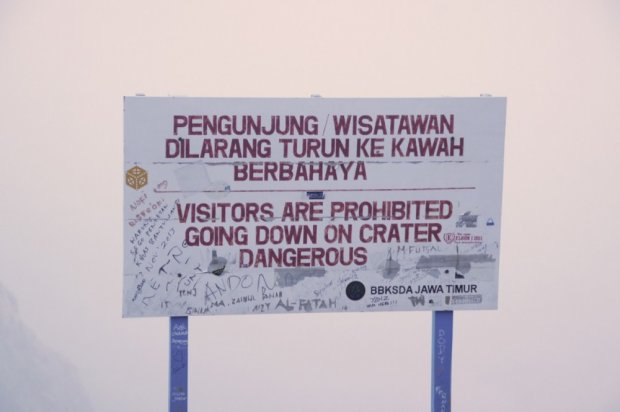
With that reasoning, we decided to take our chances, and hopped into the jeep in the dead of the night as we had planned, pumped with adrenaline in anticipation of witnessing the rare phenomenon of electric blue flames flicking out from the caldera like lava.
We arrived at the foot of the mountain at 1.17am. It was a full moon night, and the surroundings took on a strange iridescent glow as they soaked in the bright moon light. Alas, the guard was unsympathetic to our pleas to enter at our own risk, and was as rigid as a civil servant struck with rigor mortis. Stoic and expressionless except for the occasional rise in a strained tone of voice, he put an effective stop to our expedition, and insisted that we could only begin our ascent at 4am. Sunrise was at 5.30am, and the trek typically takes 1.5–2 hours.
Disappointed but undeterred, we caught some sleep in the jeep for two hours, and then rose to wait at the starting point while the guards watched on.
The Ascent
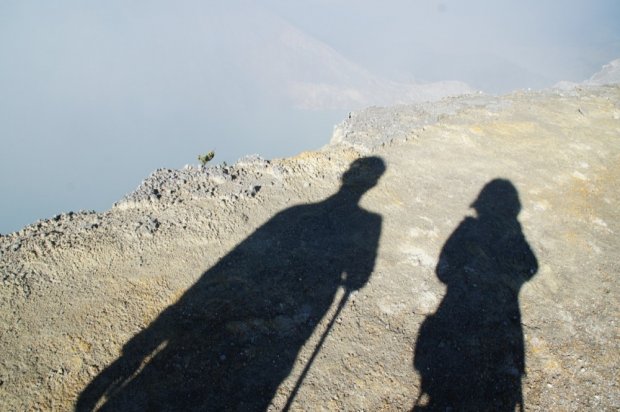
As the blue fire can only be seen in the dark, we had to double up our speed and wind up steep inclines that lead up to the caldera. It was both a test of mental and physical endurance, as we had no idea how much time we had left before the break of dawn to reach the top.
Managing and rushing up unfamiliar steep volcanic slopes in the dark is not a good idea to embark on. Many a time, the loose soil below me would suddenly give way, making me lose my footing. Thankfully, we had prepared for the trek with walking sticks (inspired by the elderly aunties that trekked up Engelberg really fast when we were in Switzerland!) and it really helped with preventing me from rolling down into the abyss.
“Indonesia and Singapore are Friends.”
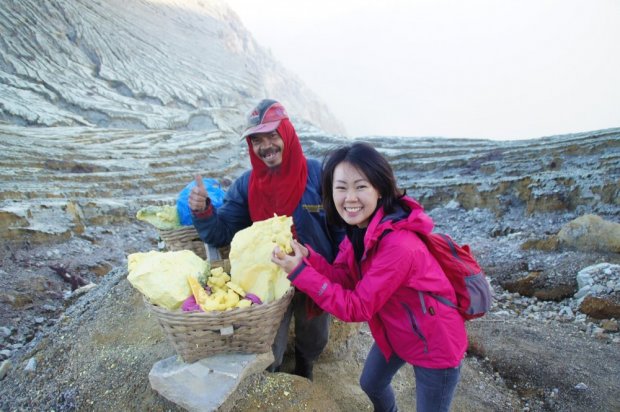
There were times I had to stop mid-way to catch my breath, and I would see miners hobbling down with their baskets of powdery yellow sulfur rocks at an unearthly pace. In the pits of the caldera, the terrain got a lot more challenging: The rock faces were steeper, and there were no clear established paths to walk on. Seeing the miners calmly walking up and down the rocky slopes with their loads was really a testament to how one’s physical limitations can be stretched when put to the test.
As I gingerly approached each step with my full gear on (Pig mask, walking stick, windbreaker, trekking shoes, etc.), I became increasingly aware of the sharp contrast between me (+ the other tourists) and the miners who had nothing more but a worn shirt on their backs and cloths to wrap around their mouths as they battled the caustic sulfuric fumes that ceaselessly stung their eyes. It saddened me to know that people had to toil under such dangerous conditions and risk their lives for a mere pittance (one of the miners showed us the amount that he gets for carrying 70kg of sulfur – a mere SGD 6).
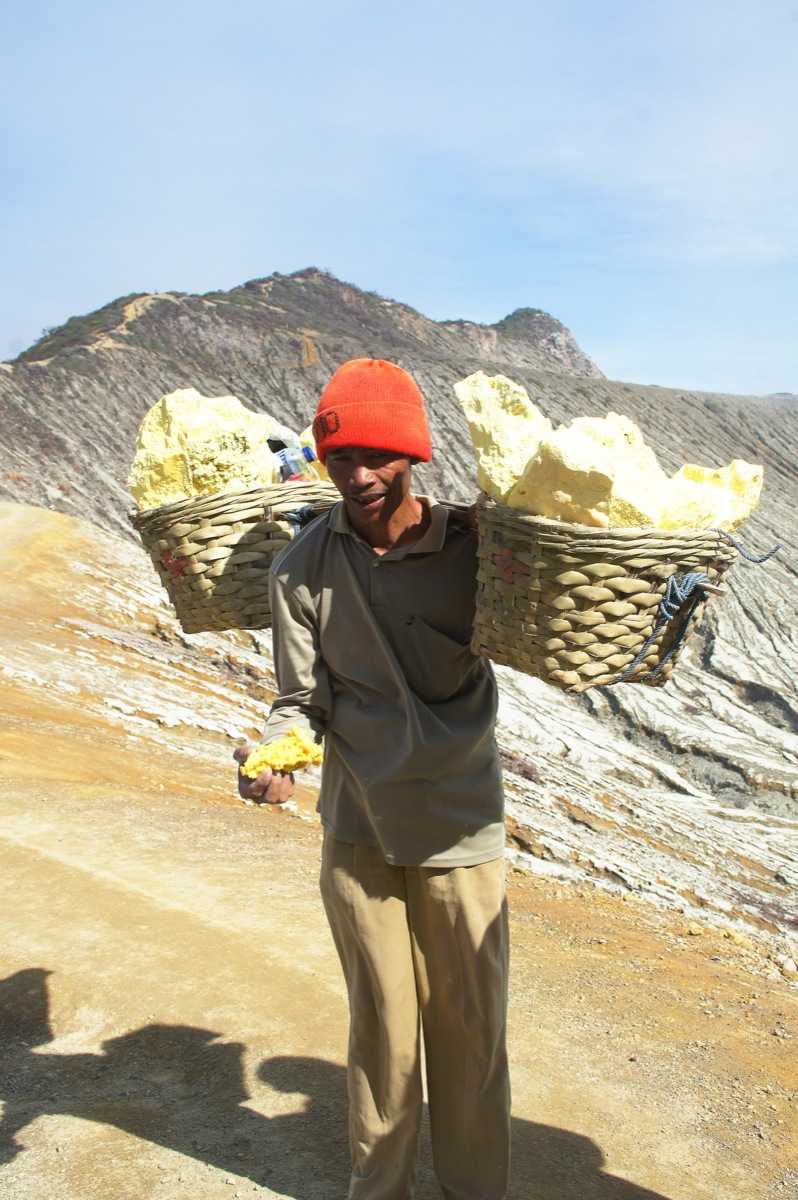
And so we began giving out our 干粮: to every miner that we saw along our way in the caldera, we would give out a bun or a pack of biscuits from my ninja bag and wish them a great morning as they went on their way. We were greeted with broad grins, gnashes of yellowed teeth showing through blackened lips (from smoking). The miners would invariably stop in their tracks and receive our little bun with such gratitude that it put us to shame for thinking so little of the food that we took for granted.
One of the miners we met was so elated with the bun that he stopped to chat with us and asked us where we were from. “Indonesia and Singapore are friends,” he uttered with enthusiasm, interlocking his fingers to reinforce his point. “Want sulfur?”, he then asked, pulling out a bag of yellow sulfur stones that were crafted into shapes of sunflowers, rabbits and aeroplanes.
Reflections
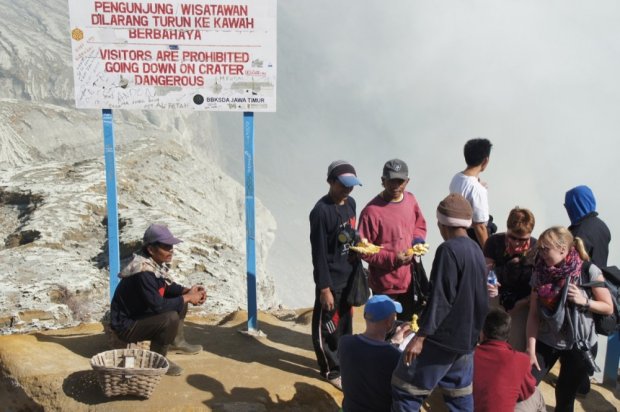
That day, as we stood along the gigantic ridges of Ijen Crater, in full wonder of the glorious landscape that lay before us, we felt like we had gotten more of this trip than we bargained for. What started out as a mere trekking trip to witness a rare phenomenon became a journey for us to reflect on our lives, and in exchange for a few buns and biscuits, a renewed gratitude and thankfulness for what we have.
To us, the miners in Ijen crater are the epitome of modern day slavery that has been overlooked because of the insidious way big corporations have distanced themselves from being cast as having direct connections to their plight. Working behind the scenes with many smaller, local third-party suppliers to get raw materials like sulfur is an ingenious way to absolve themselves of such atrocities.
What we see here is sadly a reflection of many other industries that churn out the many products in our lives (e.g. palm oil / fast fashion made by sweat shops in developing countries). Cut away the distance, and it is chilling to note that there’s blood on our hands whenever we buy products that are sourced through such exploitation. Something ought to be done to safeguard the lives of these people, who have no choice but to wager with mortality on a daily basis to, ironically, make a living.
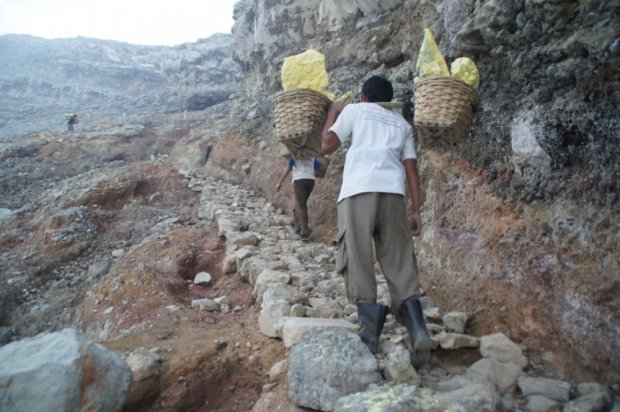
Many journalists and articles on the sulfur miners at Ijen mentioned that it was a dying trade, much like the Haenyos of Busan (sea women) as economic conditions improve and education reforms take place. But there were so many young, able-bodied miners that we saw on our trek that day; a disturbing trend that points to the longevity of such a terrible trade in the face of modernism. Hopefully, political reforms would help shed more attention on this issue, and the miners would have more to smile about in the days to come.
Contributed by Travel.Happy.
Inspired to go on your own adventure? Check out TripZilla’s Travel Packages to Indonesia.




